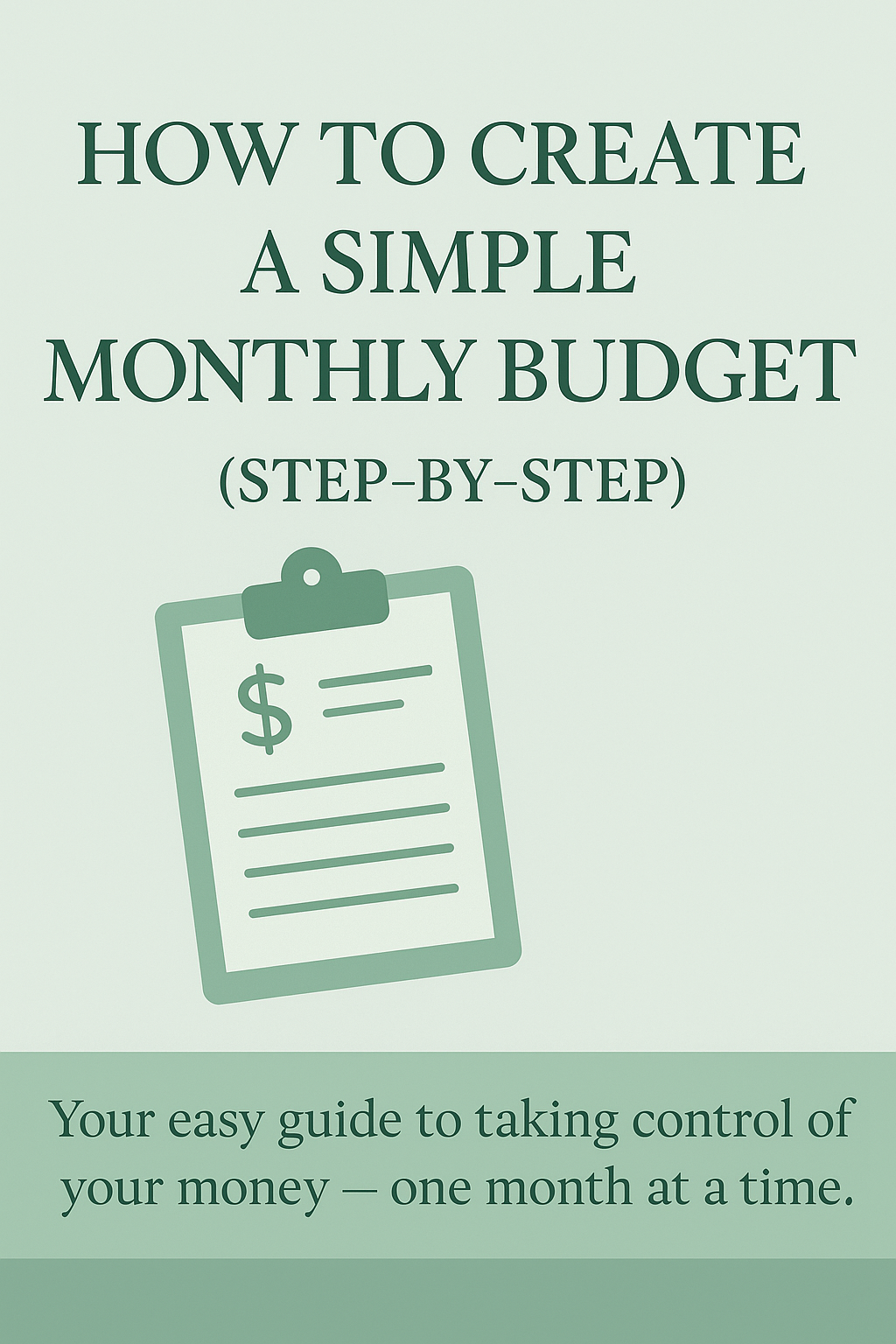Introduction
Creating a monthly budget is one of the most effective ways to take control of your finances and work towards your financial goals. Whether you’re trying to save money, pay off debt, or plan for a future purchase, setting a clear budget can help you stay on track. In this step-by-step guide, you’ll learn how to create a monthly budget and keep your spending under control.
Creating a monthly budget doesn’t have to be complicated. By following these simple steps, you’ll be able to easily track your income and expenses, and plan for your savings. Here’s a step-by-step guide on how to create a monthly budget that works for you:
In this guide, I’ll show you exactly how to set up a monthly budget in 6 easy steps. No complicated spreadsheets or finance degrees needed.
Step 1: Track Your Monthly Income
Before you budget anything, you need to know how much money you’re working with. That means your take-home pay after taxes, not your gross income.
💡 Tip: If you have inconsistent income, take an average of the last 3–6 months.
Include:
- Salary (after tax)
- Freelance/side hustle income
- Passive income (if any)
Step 2: List All of Your Monthly Expenses
Once you have your income figured out, it’s time to list your monthly expenses. Start by identifying fixed expenses like rent, utilities, and insurance, and then move on to variable expenses like groceries, transportation, and entertainment.
This step might surprise you. For the next week, track every dollar you spend. You can use:
✍️ Why? It helps you see where your money is going so you can adjust intentionally.
Step 3: Set Budgeting Categories for Your Expenses
After listing your expenses, group them into different categories. Common categories include:
Now write down all your fixed and variable expenses.
Fixed Expenses (same every month):
- Rent/Mortgage
- Utilities
- Insurance
- Subscriptions
Variable Expenses (can change):
- Groceries
- Dining out
- Entertainment
- Fuel/Transport
- Miscellaneous
Step 4: Assign Amounts to Each Budgeting Category
Now that you have your categories, it’s time to assign an amount to each one. Make sure you don’t go overboard in your lifestyle spending and prioritize essentials and savings. You can use the 50/30/20 rule as a guide:
Based on what you’ve tracked, set reasonable spending caps for each category. Prioritize essentials, but give yourself a little fun money too!
🎯 A simple rule to start with:
50% Needs | 30% Wants | 20% Savings/Debt
Step 5: Review and Adjust Your Budget Regularly
Your budget is a dynamic tool, and it’s important to review it regularly. This means revisiting your spending at the end of each month and adjusting it as necessary. Tracking your budget allows you to make sure that you’re staying on top of your financial goals.
Here are a few beginner-friendly methods:
- Zero-Based Budgeting: Every dollar has a job.
- 50/30/20 Rule: Simple and flexible.
- Envelope System: Great for cash budgeting.
Choose one that fits your lifestyle — no one-size-fits-all.
Conclusion – Stay Committed to Your Monthly Budget
By following these simple steps, you’ll be able to create a monthly budget that works for you. It’s important to stay committed to your budget and make adjustments as necessary to meet your goals. Whether you want to save for a vacation, pay off debt, or build an emergency fund, a well-planned budget is the first step to financial freedom.
A budget is a living document — check in weekly to:
- Track progress
- Adjust categories
- Celebrate small wins (like spending less on takeout!)
Final Thoughts: Start Simple and Stay Consistent
The first month won’t be perfect — and that’s okay. The goal isn’t perfection; it’s progress. By building this habit, you’ll reduce money stress and start creating the life you want.
📥 Want a Free Monthly Budget Template?
I’ve created a printable + digital-friendly monthly budget sheet to help you get started.
👉 Grab it here — no signup needed (for now!)





0 Comments